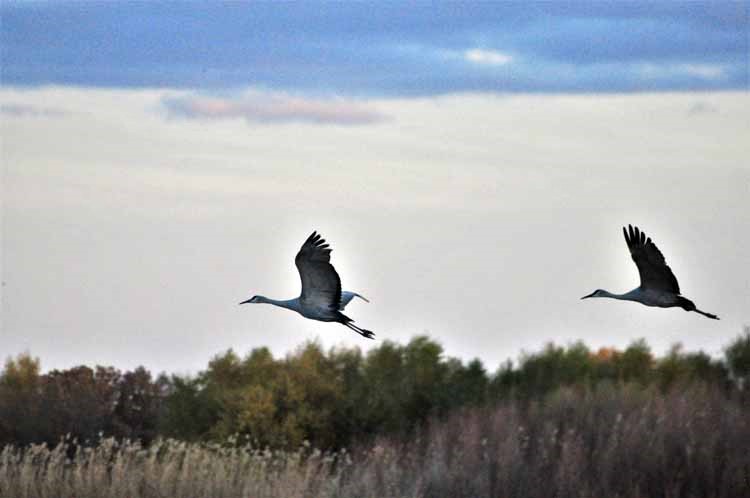
It was a sunny and clear autumn day that a friend and I visited New Mexico's Bosque del Apache National Wildlife Refuge to view the thousands of sandhill cranes that have chosen the Bosque as their winter nesting grounds.
Each year between October and November, the cranes begin their return to the south central New Mexico refuge and surrounding areas from regions north. There are various species of sandhill cranes in scattered areas of the U.S. The species that return each year to the Bosque is the Rocky Mountain population of greater sandhill cranes, the largest of the species and identified by a red patch on its forehead.
Sandhill cranes are among the oldest species of birds, having changed little in the millions of years they've been in existence. Fossils have been found that date them back 10 million years.
Life for the cranes at the Bosque begins at daybreak when they awake from resting on the safety of the shallow waters and make their way to the wetlands, marshes and fields where they feed on insects, grains and rodents. Socializing is also a part of their daily routine. As sunset approaches, they return to the waters in flocks, squawking all the way. With heads tucked and standing on one leg, they roost for the night. Instinct tells them the safest place to sleep is on the water where predators cannot easily reach them.
This pattern continues until February when they begin their migration north, covering some 500 miles in nine to ten hours.
The cranes stand four feet tall, have a wing span of more than six feet and are monogamous. They have as many as 10 different types of calls, each with its own meaning that includes joy, danger and "Mama, I want your love." Sandhill cranes can live upwards of 25 years.
The Bosque del Apache National Wildlife Refuge, located just off Interstate 25 south of Albuquerque in Socorro County does its part to provide corn and other grains that will sustain the birds through the winter. The park was established in 1939 and is open year round. A 14-mile driving loop allows visitors to view other parts of the park that include grasslands that are habitats for other types of birds. Large flocks of snow geese can also be seen at the refuge in the winter months. Hiking trails, a visitors center and gift shop are available.

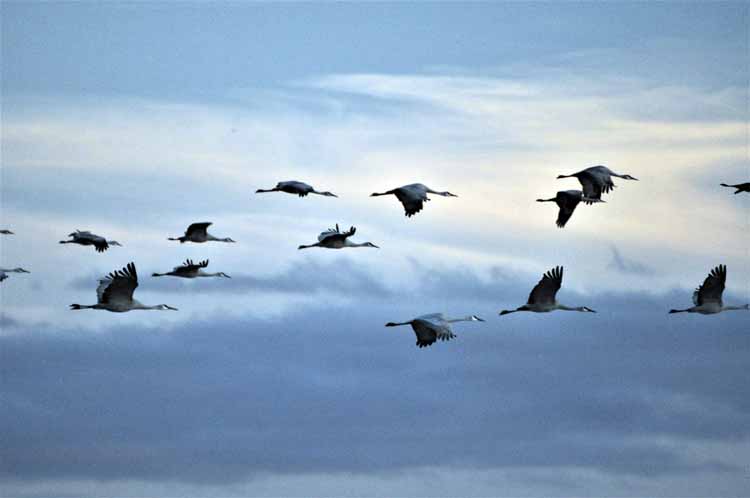
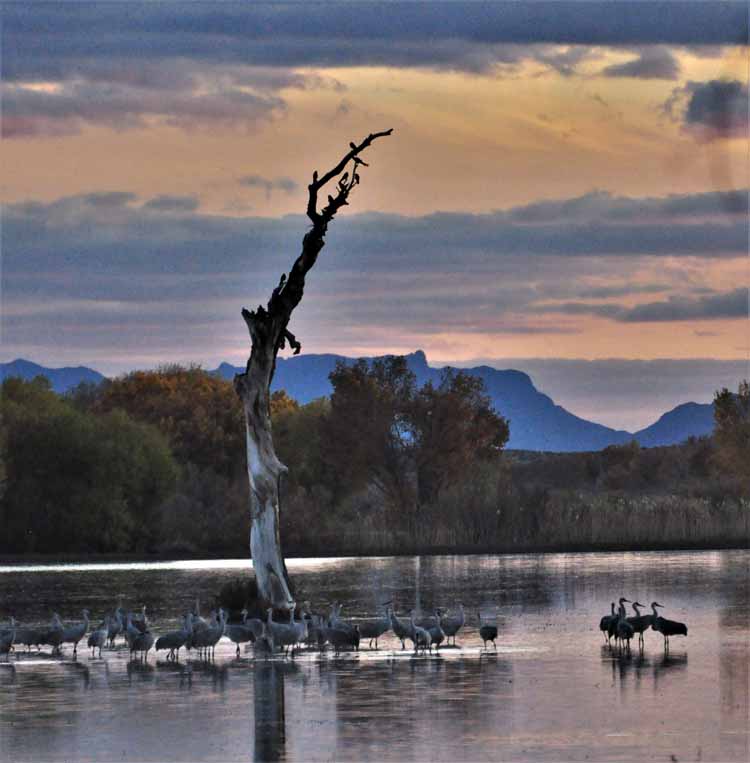
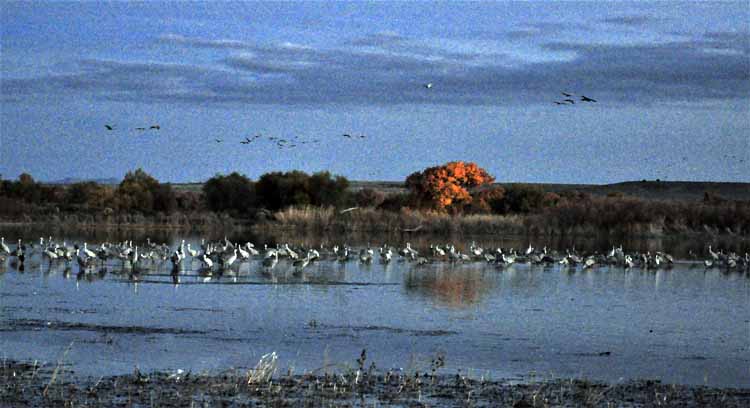
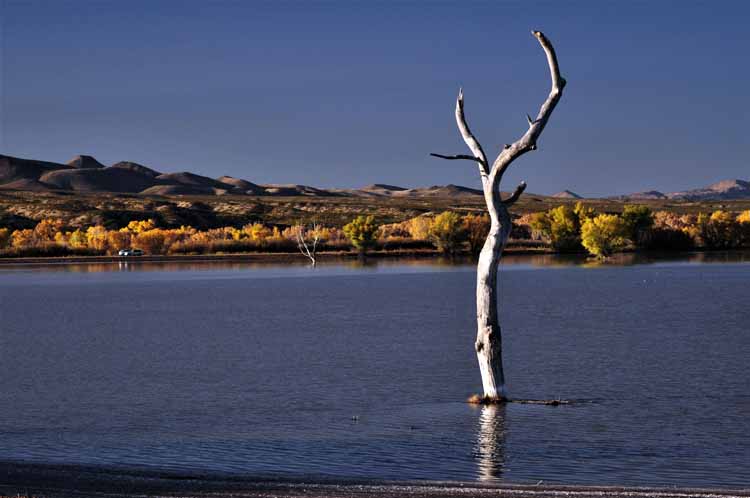
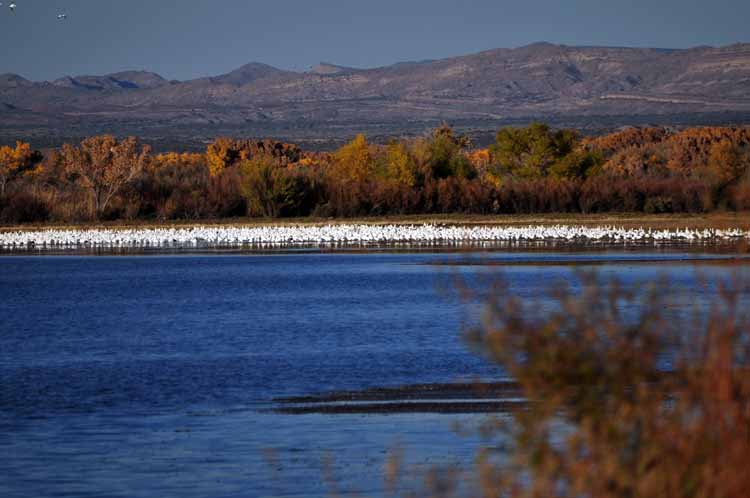

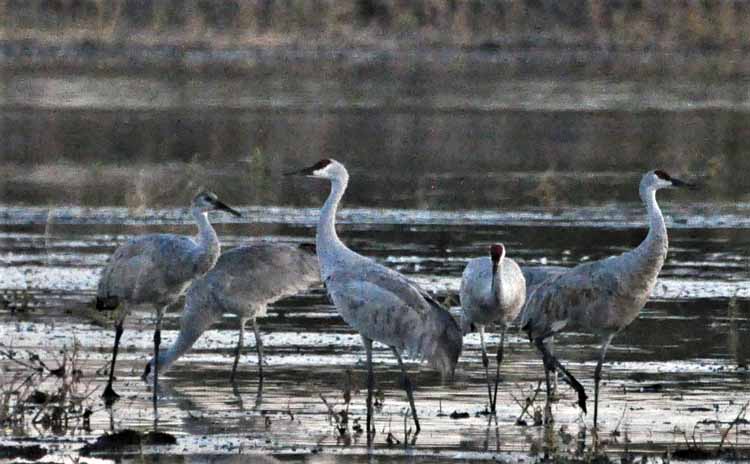
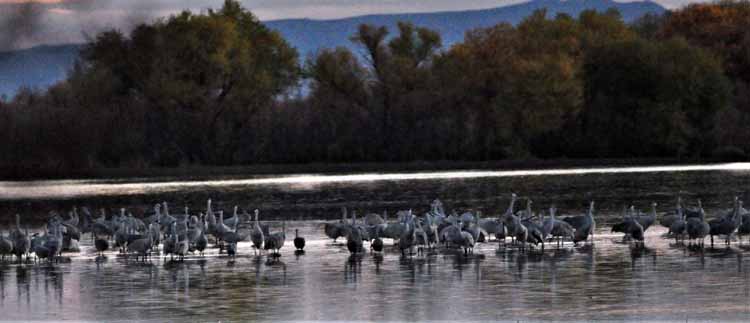

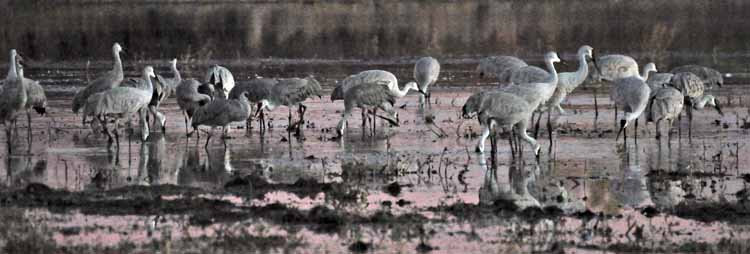

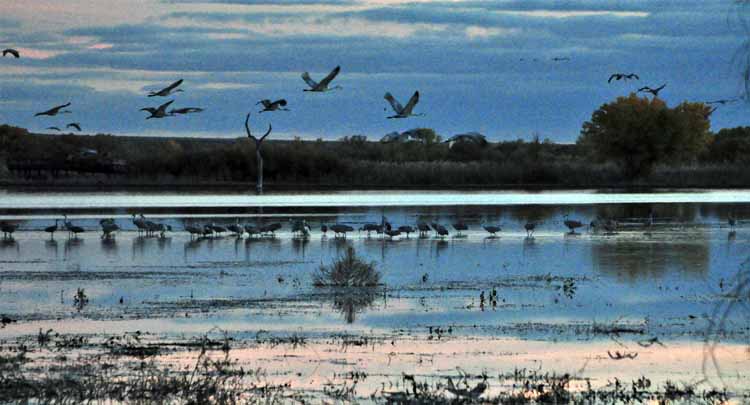
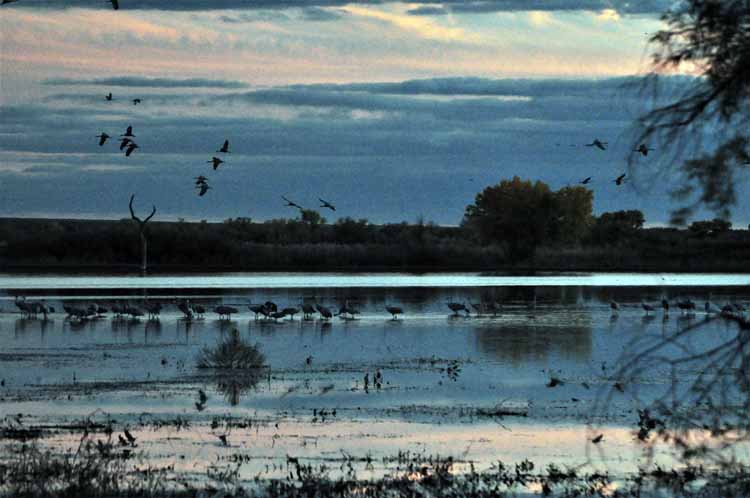
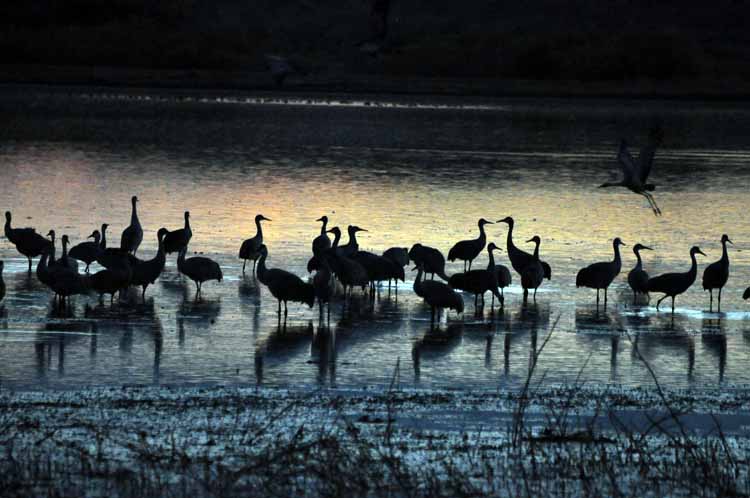
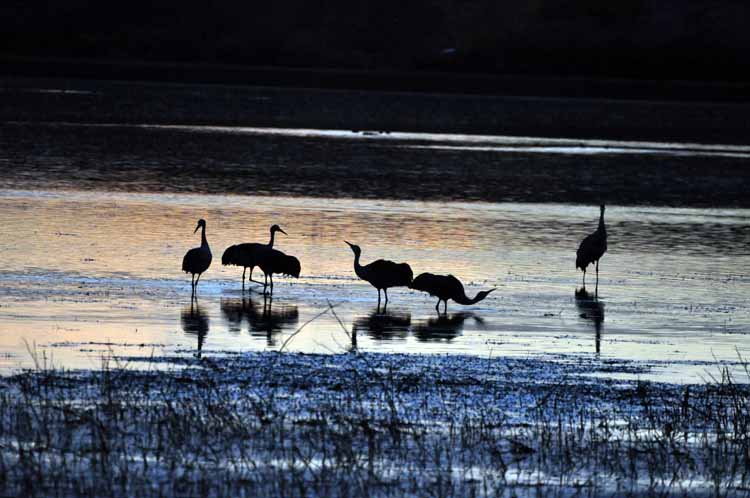
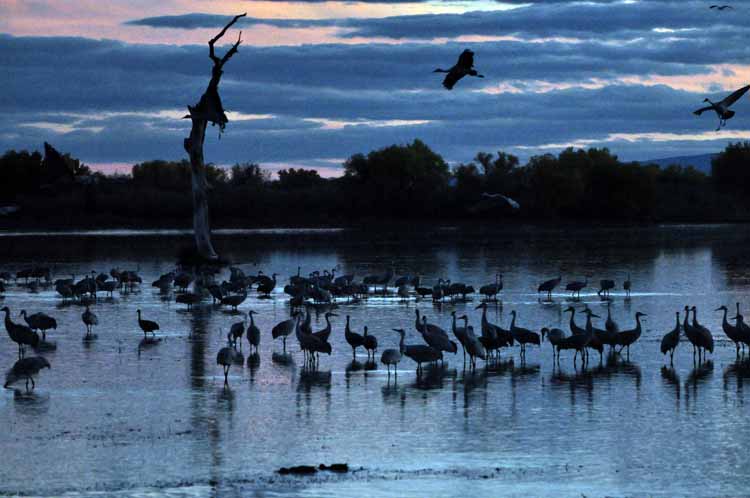
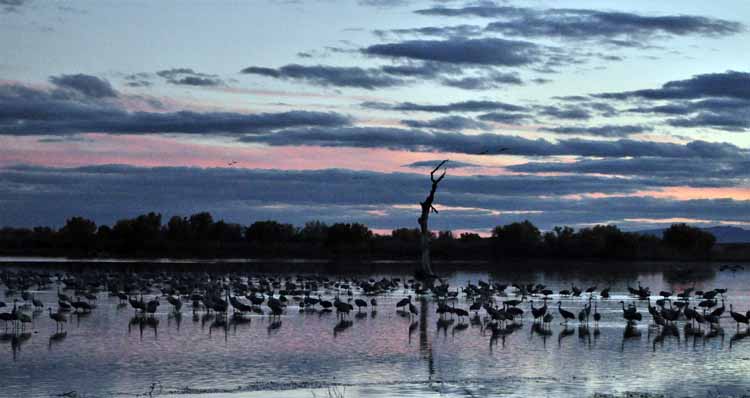
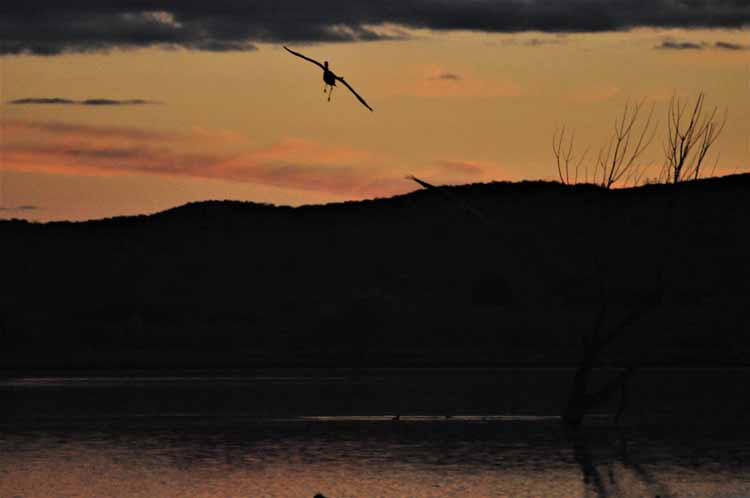
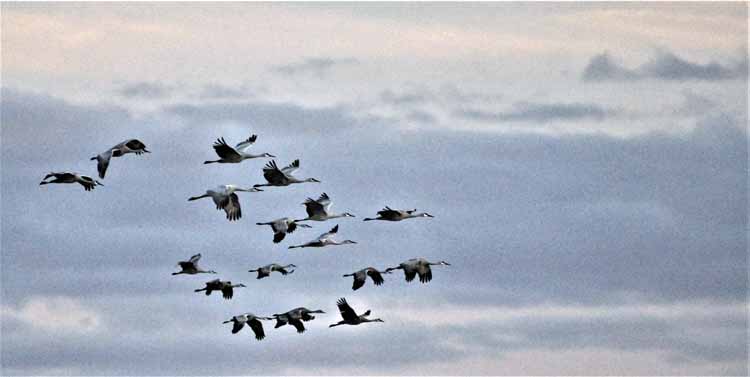
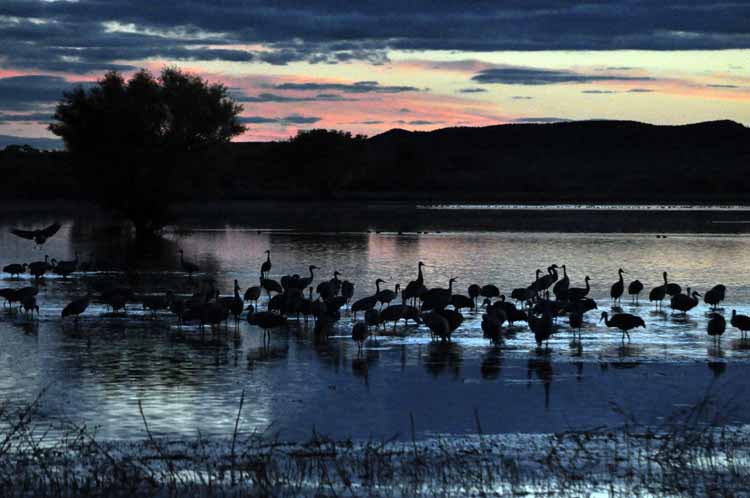
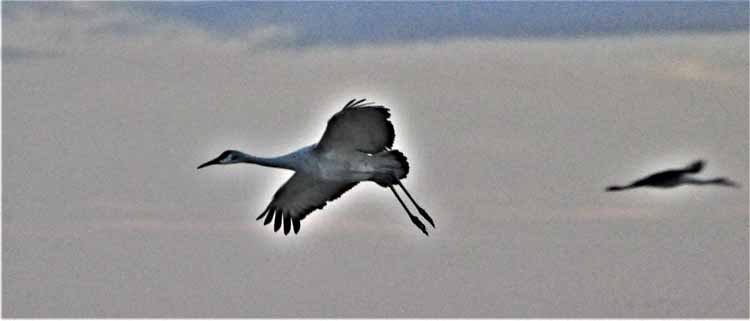

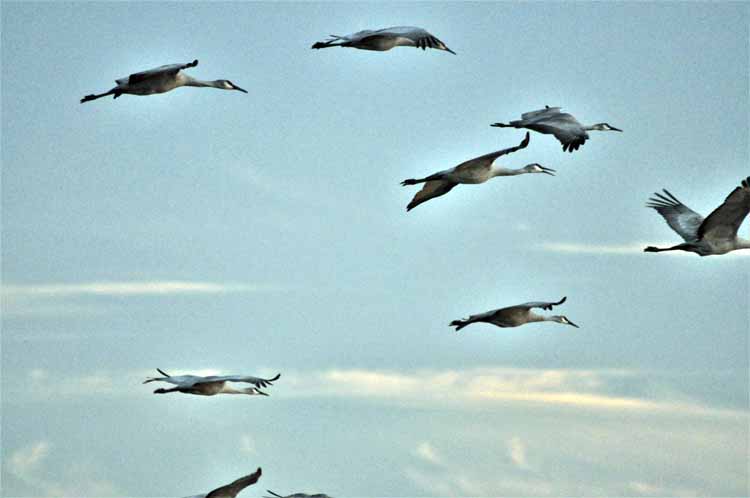
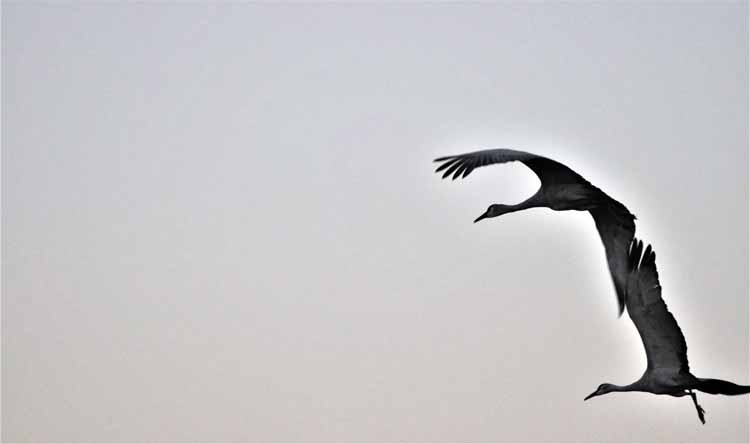
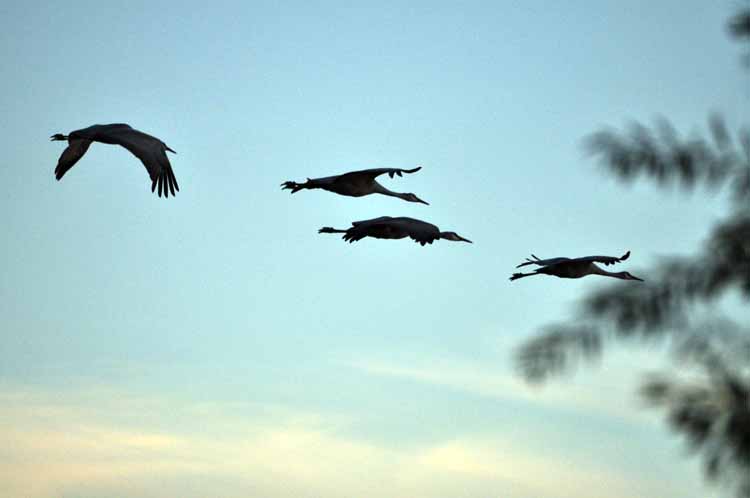
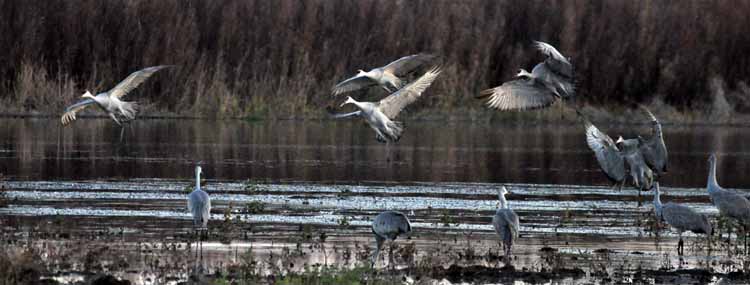
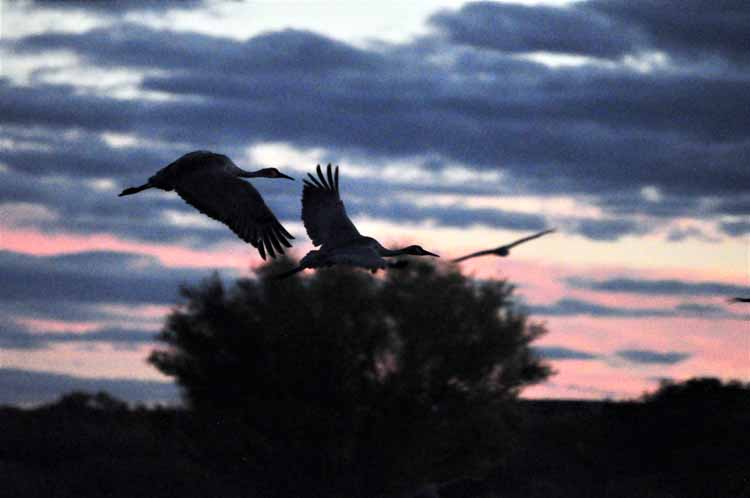

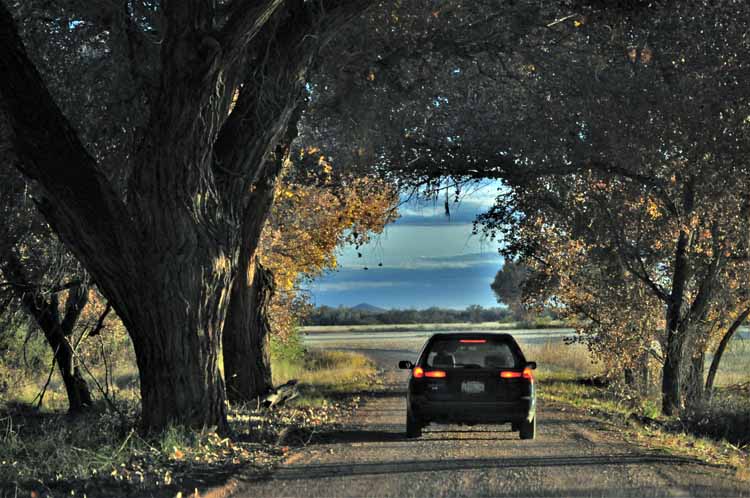
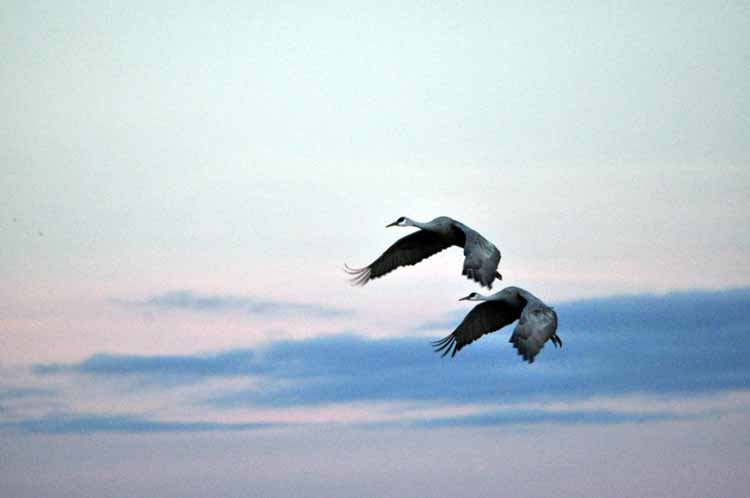
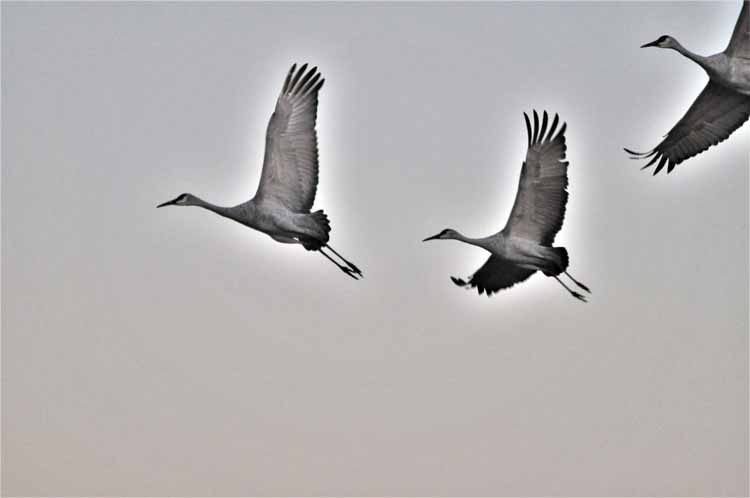

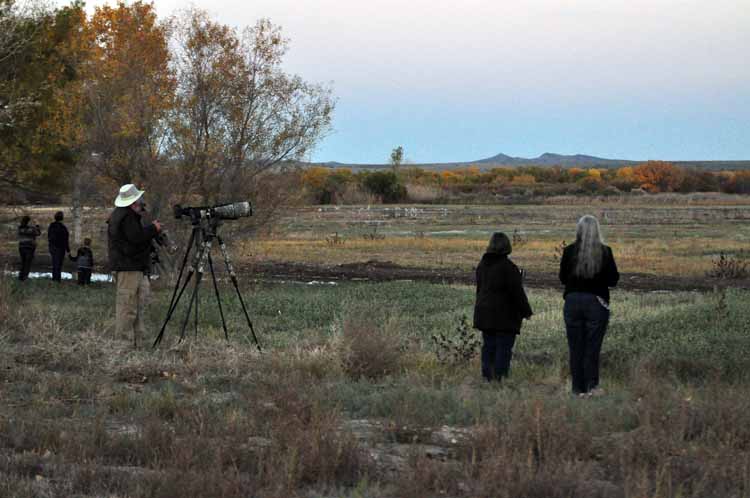
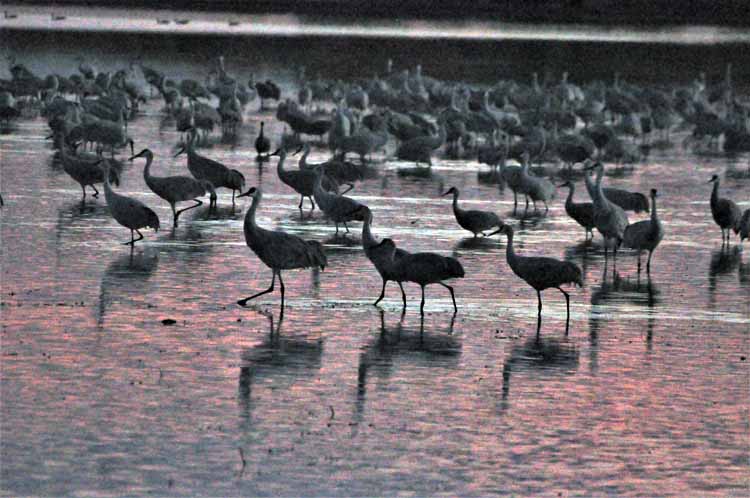
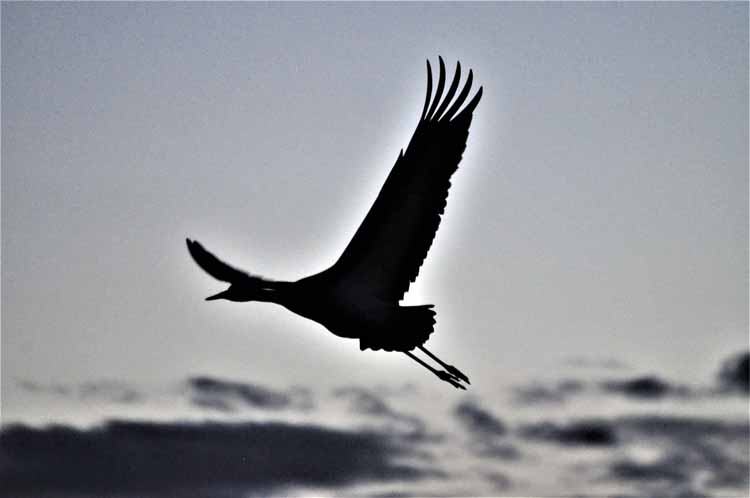
Thank you for visiting these photo pages.
If you're interested in seeing more, please return to my Main Menu at the bottom of my home page and make your selection.
All images within thewanderingchick.com Web site are copyright protected. They may not be downloaded or otherwise copied.
Please contact me if you think a particular photo or set of photos can be used in your publication.